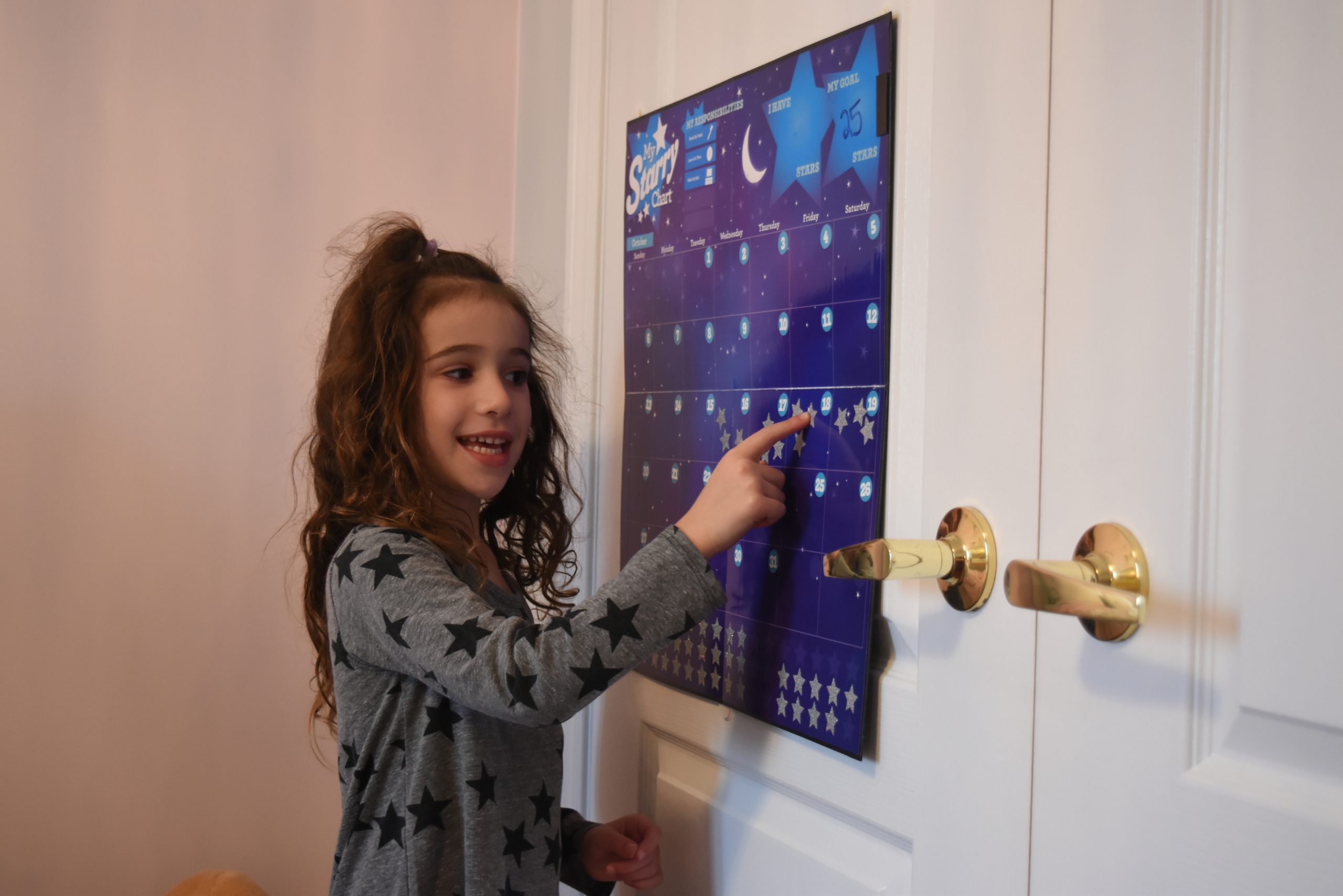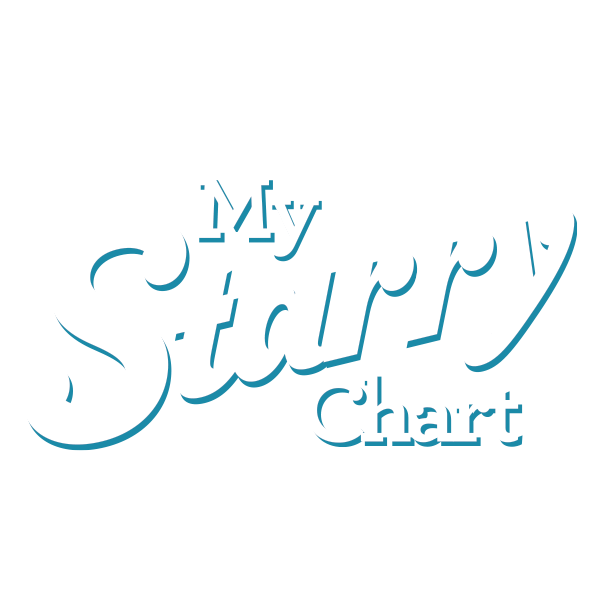
Childhood brain development and the stages of a child's growth can mean some chores will be more impactful than others

As adults, most of us are on board with the idea of age being nothing but a number.
But when it comes to the brain development of our kids, every age counts.
That’s why pediatricians and child psychologists urge parents to keep a close eye on their children to ensure they reach crucial milestones.
But parents should also keep their children’s age in mind when assigning them chores and responsibilities.
Some tasks might be too challenging, too easy or too risky for a child because of their age, while other tasks might provide the right amount of mental stimulation and neural strengthening for their age.
How should you determine age-appropriate chores for your kids? Can a kids chore chart help organize and ensure chores are age-appropriate?
The Growing Brain & Assigning Behaviour Charts for Kids
During childhood, the brain is busy interpreting, organizing, collecting, wiring, pruning and shaping itself for adulthood.
In fact, 90% of brain development occurs by age 5, and a child’s brain contains twice as many synapses as an adult brain.
This process doesn’t occur haphazardly – there’s a sequence, an order in which it develops certain skills.
This ultimately affects what tasks your child can do for their current age. Additionally, the theory goes that brain development occurs from the bottom up – in essence, it looks like this:

The brain gets busy interpreting, organizing, collecting, wiring, pruning and shaping itself for adulthood.
The brain first learns to regulate essential bodily functions at birth, and over time, it begins to master more complex functions that are necessary for learning and maturation.
Brain development starts at the base – the brainstem – and then gradually moves upwards.
We could write volumes of articles as to what’s going on inside of a child’s rapidly growing brain.
However, we’ll focus on how these developments affect your child’s sense of movement, communication and emotions since these factors dictate what chores they should do for their age.
Keep in mind that for each age group below, the suggestions are for new chores that can be introduced for this age group. As they get older, they should still practice the recommended chores of younger age ranges.
Development from Ages 1-3
During the first three years, the brain develops at an exponential pace.
There is a rapid increase in vocabulary and use of language. They can follow simple commands and provide answers to simple questions.
In terms of movement, kids at this age will try feeding themselves, may start potty training, take the covers off of containers and more.
Toddlers will start to explore shapes, repeat words (even if they don’t know what they mean) and ask many, many questions.
At this stage, it’s beneficial to start them doing small tasks that will support their limited motor and speech skills.
Kids Chore Chart Ideas for 1-3-Year-Olds
- Cleaning up their own messes (such as wiping spilled milk with a paper towel)
- Get dressed (with your assistance, zipping jeans, buttoning coats)
- Pick what toys they want to share (verbally)
- Potty training duties (wiping, flushing)
Development from Ages 4-5
Around the ages of 4 and 5, kids will start stringing together more complete albeit simple sentences. Their attention spans will lengthen and their memory skills will improve as they start reciting nursery rhymes.
Their motor skills will also show advancement as they get a better grip on using knives and forks, making shapes with clay and zipping/unzipping their clothing.
They will also become better at noticing the properties of objects around them, learning about living things and understanding the concept of having a daily routine.
Kids Chore Chart Ideas for 4-5-Year-Olds
- Get them to clean their rooms (with your guidance)
- Put their toys away (with your guidance)
- Brushing their teeth and hair
- Deciding what to eat (ideally, healthy foods such as fruits and veggies)
- Go to bed on time (make them familiar with a reasonable time you have set)
Development from Ages 6-7
School-age children will start to show a wide range of interests, thoughts, and emotions.
Their ability to tell time, remain focused and develop an awareness of their surroundings will greatly increase. Also, their understanding of mathematical concepts and language comprehension will start to expand.
Physically, kids who are around the age of 6 and 7 will show increased coordination of large and small muscles, as well as better hand-eye coordination. They will likely be able to ride a bike, swim and spend plenty of time running, jumping, climbing and skipping.
Kids Chore Chart Ideas for 6-7-Year-Olds
- Practising table manners
- Clearing/setting the table
- Doing their homework
- Packing their backpack & lunch for school
- Help with indoor chores (under your guidance)
Development from Ages 8-10
As kids enter the “tween” phase, both their critical and abstract thinking skills will expand. They will start to express their creative skills through activities such as drawing, writing, acting and inventing. Their reading and writing skills will increase. Their sense of fairness, ethics and morals will start to take shape and they will be more adept at expressing their own point of view.
They will show far more interest in their social lives, wanting to be part of clubs, groups, and sports teams. They will likely become emotional at times.
Physically, many kids in this age range will show rapid improvements in athletic abilities due to increased coordination and muscle strength. Let’s not forget that kids at this age are approaching puberty, so limbs are getting longer and bodies are getting taller.
Girls, who develop a bit faster than boys, may start to see some sexual development.
Kids Chore Chart Ideas for 8-10-Year-Olds
- Practice reading (or instrument, sport)
- Practice bedtime routines (such as winding down, planning for the next day)
- Washing their face (before bed, upon waking up)
- Take care of a pet
Development from Ages 11-13
The late pre-teens and early teens bring in a flood of developments. Kids start to express their needs, wants, and feelings more openly.
Their breadth of knowledge starts to expand, and many kids at these ages will develop talents or hobbies (sports, arts, tech) with astonishing ability.
Socially, they are beginning to identify with a peer group and will start to recognize the impact of peer pressure. They may also take on leadership roles, start to accept different points of view and define themselves by means of their fashion sense or taste in music.
Physically, kids at this stage may experience a degree of clumsiness and awkwardness due to puberty. Nevertheless, they may participate in sports and dance. Keep in mind, that puberty will begin at this age for some kids, especially girls, who may start menstruating.
Kids Chore Chart Ideas for 11-13-Year-Olds
- Do their laundry/put laundry away
- Help with recycling/garbage
- Help with the dishes
- Water the plants
Development from Ages 14-18
Yes, the teen years may seem gloomy, but the brain undergoes major pruning and “re-wiring” of its circuitry that helps shape their “adult” minds.
Teenagers will show greater abstract thought, a deeper sense of morality, the meaning of life and goal-setting.
Socially and emotionally, teenagers may seem a bit volatile because they are forming their identities while trying ever more to fit into their peer groups.
Puberty will be in full swing so they’re likely to feel somewhat self-conscious about their bodies from time to time. With that said, their physical development will be dramatic – increases in height, muscularity/strength, and widening of hips are all to be expected.
Kids Chore Chart Ideas for 14-18-Year-Olds
- Help with both indoor and outdoor chores
- Help parents and siblings with their work, chores and responsibilities
- Think of ways to contribute to the community and help neighbours where possible (this may include ways to be an active listener or to be generous to those in need)
Takeaways for Parents Using a Behaviour Chart for Kids
Sometimes we may find a challenge when posing a task, chore or goal to our young child.
However, rather than the task being correlated to a difficult child, it is good to remind ourselves that it could be the task itself.
Correlating brain development to kid’s chores can help us remember the natural progression of childhood development. Sometimes we may ask too much or too little from our kids.
For example, a parent from a “traditional culture” who took on many household duties by age seven may expect their kid to do the same. Likewise, a parent who has an injury-prone or chronically-ill child may shield them from doing any chores whatsoever.
Neither case is ideal. That’s why it can be helpful for parents to follow the guidelines on when their kids should undertake new responsibilities. While also still pushing children to step outside of their comfort zone, when a task is new or initially challenging.
With that said, here are some additional pointers for parents to follow.
- Don’t compare your kids to others – Phrases such as “When I was your age” or “your brother or sister can do it, why can’t you?” only creates negative feedback. Even at younger ages, kids can register these statements and it can lead to low self-esteem and self-doubt early in life. Encourage them to do their best but avoid making statements that may lead to feelings of inferiority or comparison.
- Allow for wiggle room – Although childhood growth and development is fairly consistent, some kids will reach milestones a bit earlier or later than others. So don’t fret if they’re slightly behind when it comes to adopting a habit or learning a new chore. They’ll likely catch up and do just fine.
Choosing a Behaviour Chart for Kids is a Matter of Age
It’s our hope that as your kids grow and develop, they will accept and enjoy new responsibilities and chores.
Not only will their participation in household chores help promote their natural development, but it will also prepare them for adulthood.
The key to facilitating their progression is to consider their age and give them chores that match their current abilities.
If you plan on using a chore chart to track their activities, make sure to align the activities with their current age and skill level.
By doing so, you will ensure that they are getting the practice they need without over or underwhelming them. It also allows for a habit of realistic goal setting; a skill that can transcend any age, and benefit them deep into adulthood.
